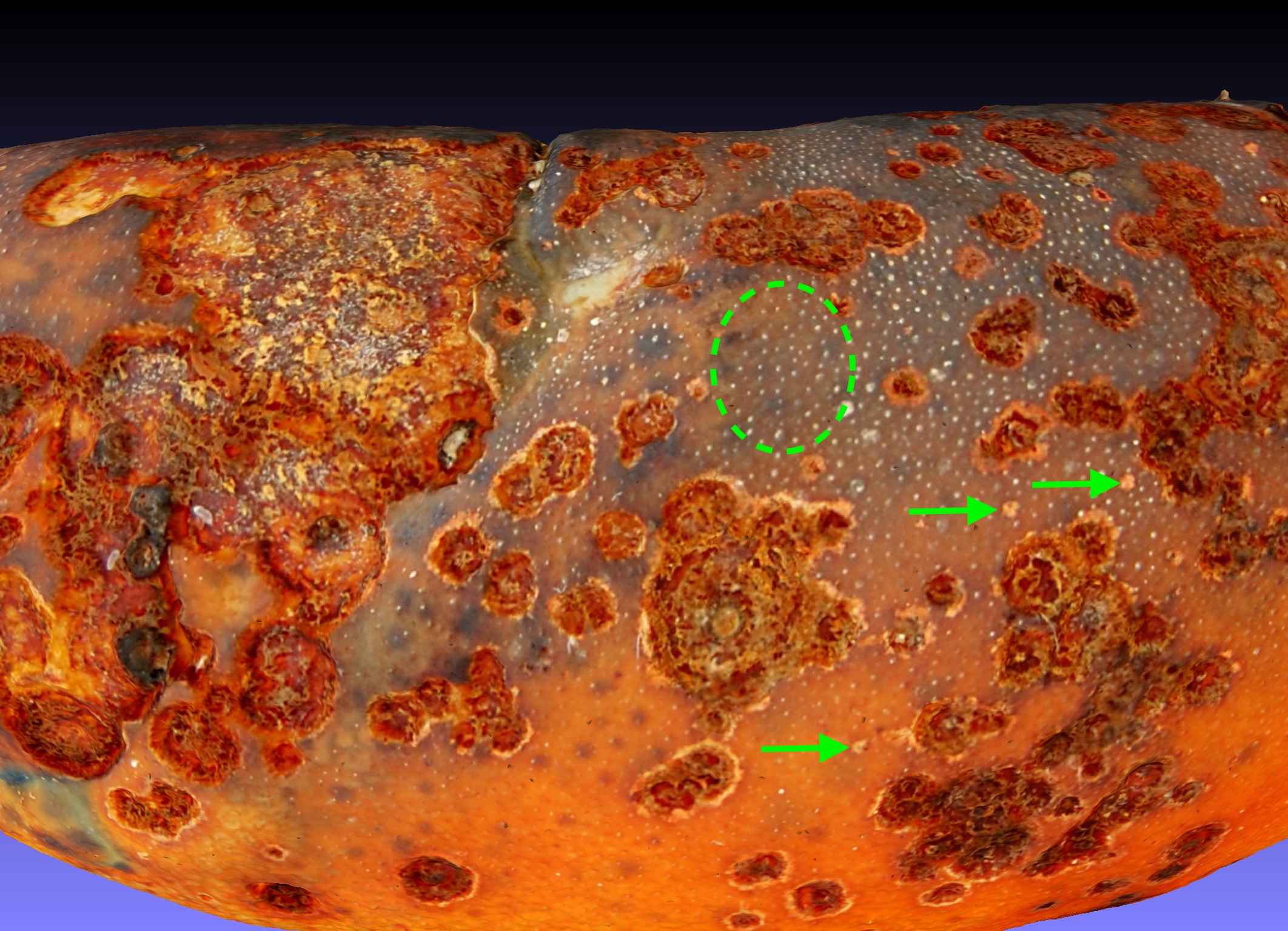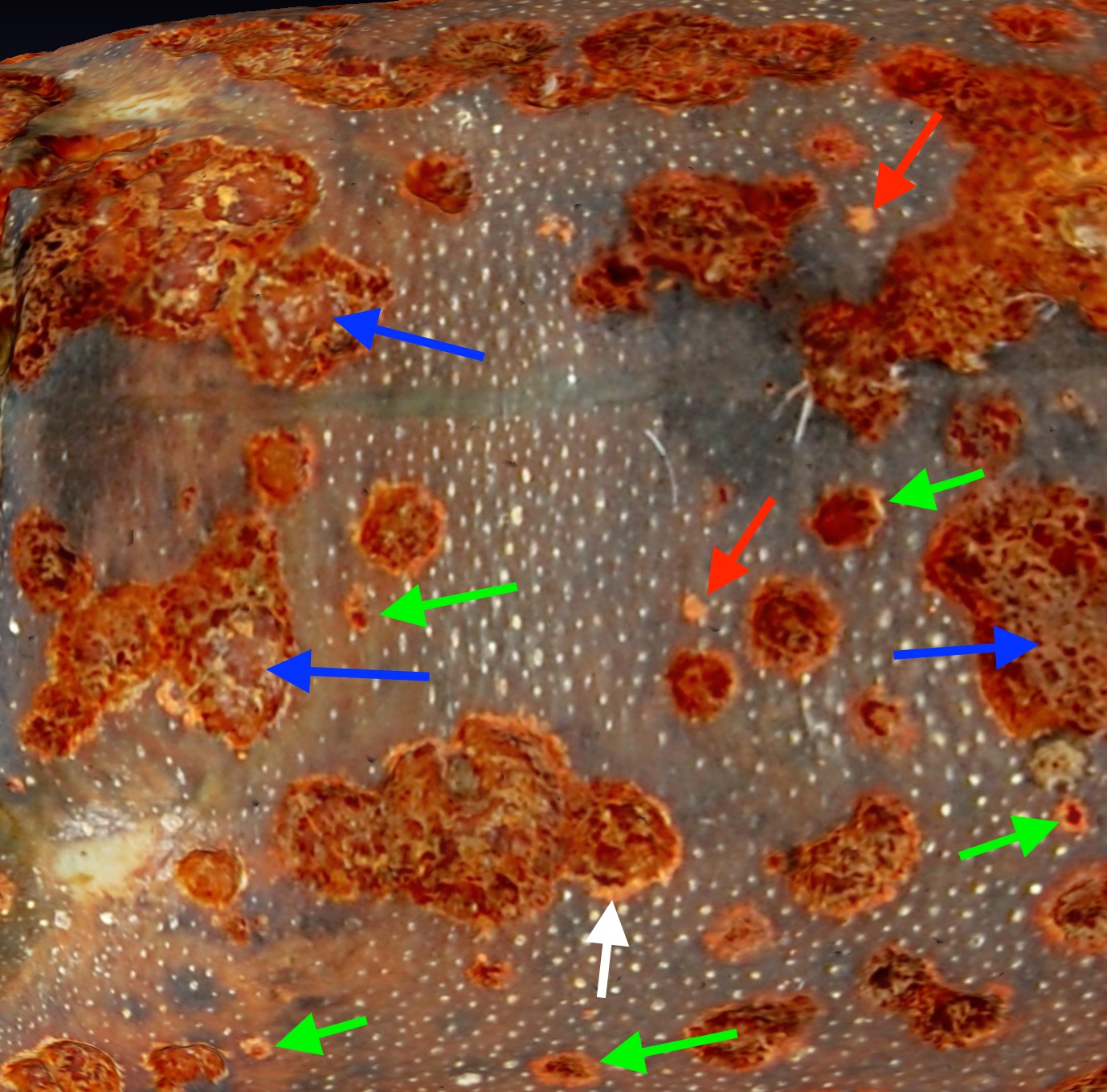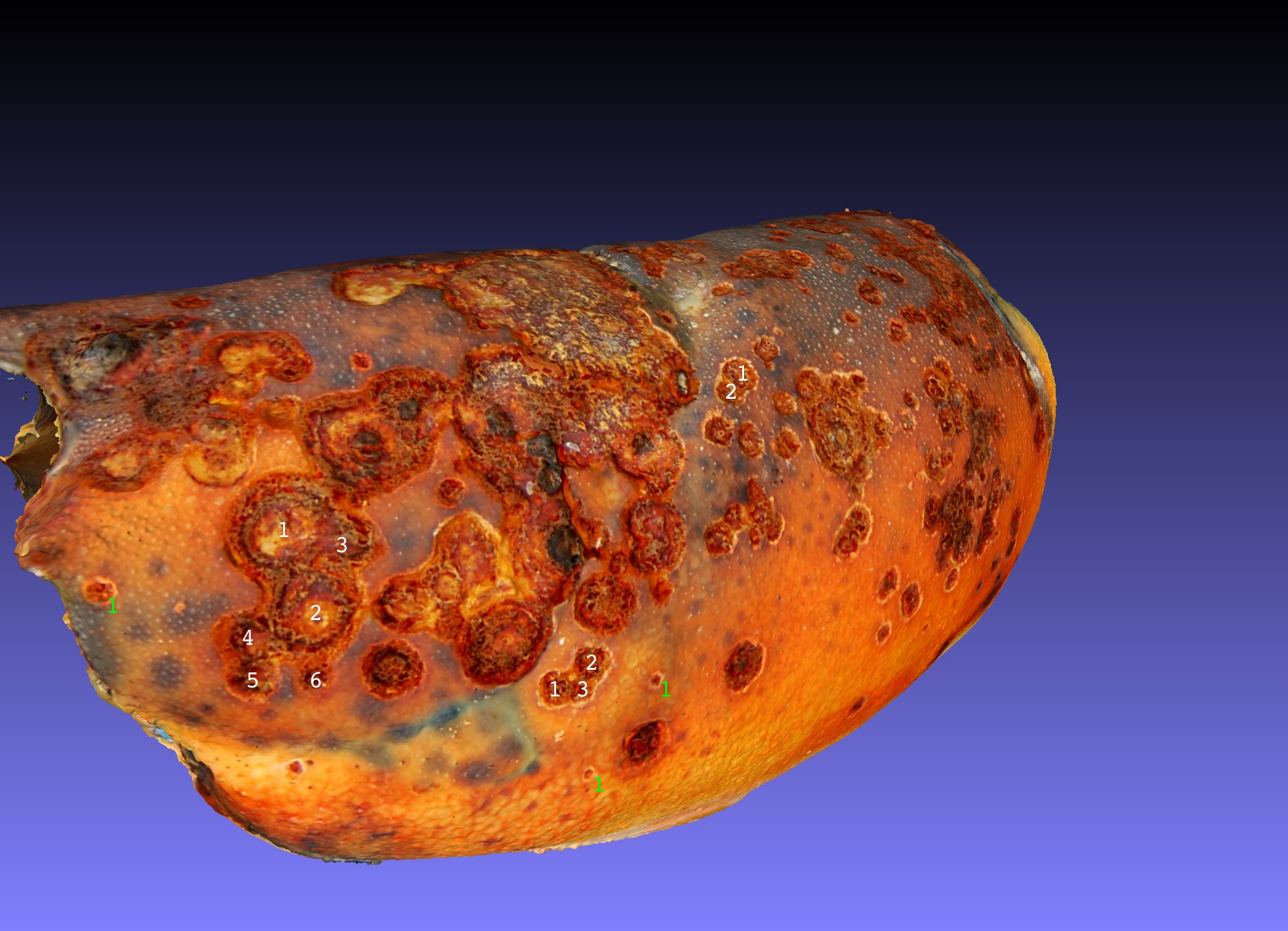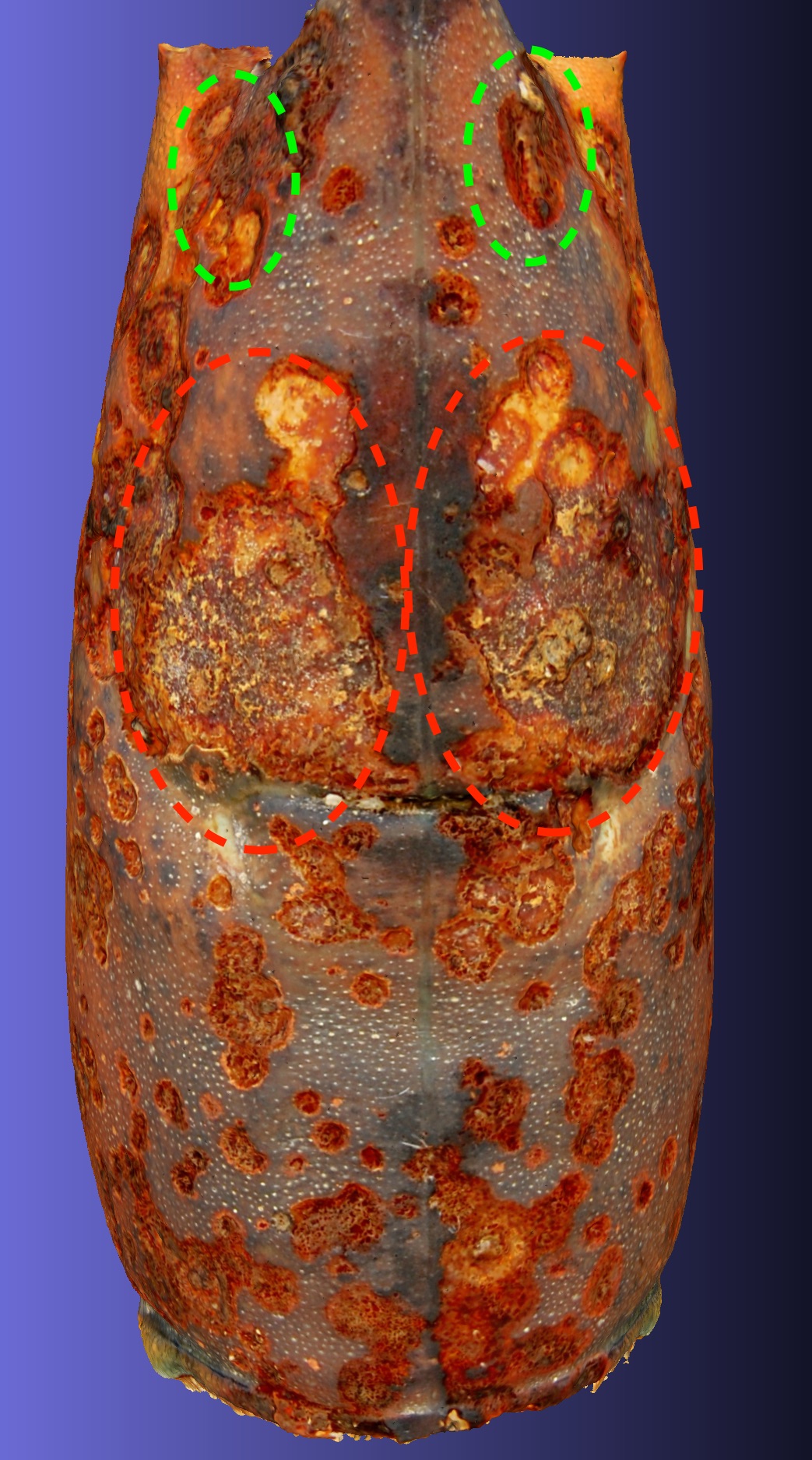The origin of lobster shell lesions has been discussed particularly after the importance of Epizootic Shell Disease (ESD) became apparent. A description of its pathology and that of related diseases has been discussed (Chistoserdov et al. 2005). In the accompanying figure I show a sector of the S2019_398_01 carapace which exhibits level 3 ESD and shows what I interpret as origins that occured most recently pointed to by green arrows. The green dashed oval surrounds a field of cuticle that is populated by primary, secondary and tertiary organules that have been discussed as potential origins of lesion attack.



